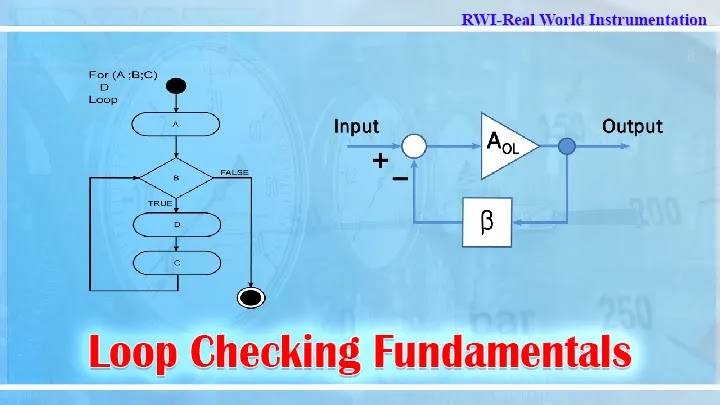Loop checking is a critical aspect of process control. It ensures that the loops in the control systems are functioning optimally and helps identify and isolate potential issues.
What is Loop Checking?
Loop checking is a diagnostic procedure used to verify the functionality of a control loop. It involves injecting a signal into the loop and observing the system's response. By comparing the expected response with the actual output, technicians can assess the performance of each component within the loop.
Types of Loop Checking
There are several types of loop checking techniques, including:
- Manual loop checking: Involves injecting a test signal manually and observing the system's response using instruments.
- Automated loop checking: Uses specialized software or hardware to perform the checks automatically, providing faster and more comprehensive results.
- Bump testing: Involves injecting a step change in the control signal to assess loop response time and stability.
- Frequency response checking: Analyzes the system's response to a range of input frequencies, revealing potential issues with controller tuning or process dynamics.
Steps Involved in Loop Checking
The steps involved in loop checking typically include:
- System preparation: Ensure the system is stable and under normal operating conditions.
- Test signal injection: Inject a test signal into the loop using a manual or automated method.
- System response monitoring: Observe and record the system's response using instruments or software.
- Analysis: Compare the observed response with the expected response to identify deviations.
- Troubleshooting: Based on the analysis, identify potential issues and take corrective actions.
Loop Checking Process
Some think of loop checking as a process to confirm that the components of the loop are correctly wired and is typically done prior to start-up. The loop check’s scope has expanded to include tests to confirm that it is “operating as designed” and then to ongoing programs for bench-marking and monitoring performance.
The process starts when the instruments are received at the plant site. This process continues through installation, start-up and into ongoing plant operation. As well as, the control system have to perform the intended function properly. It includes verifying transmitter’s process variable (PV) to display for the operator, to be used in the control strategy, and for historical trending.
The verification testing before the start-up is called the factory acceptance test (FAT) which (optional) can be duplicated at site with the actual hardware and software installed, termed site acceptance test (SAT).
The FAT can be done before the shipment of the hardware or in parallel with the hardware installation at site if the overall start-up schedule is in hurry. When the technician checks the control strategy to verify and confirm that the expected output to final control element is produced and accepted, the loop can then be commissioned and start-up can be proceed.
Finally, the loop check can involve defining the loop performance benchmark and providing a method for monitoring the performance over time.
Maintenance and Troubleshooting
Regular loop checking is necessary for effective process control maintenance. It should be performed:
- Periodically as part of preventive maintenance: This helps identify and correct minor issues before they become major problems.
- After system upgrades or changes: Loop checking ensures that the changes have not introduced any control issues.
- When performance issues arise: Loop checking helps pinpoint the root cause of problems and determine appropriate corrective actions.
Loop checking also plays a vital role in troubleshooting. It can help isolate the source of problems, such as:
- Controller malfunctions
- Sensor or actuator issues
- Feedback signal interference
- Process disturbances
Why is Loop Checking Important?
Loop checking is essential for the following reasons:
- Early problem detection: It allows for proactive identification of potential issues before they escalate into major failures.
- Improved safety: Loop checking ensures that control systems are operating within safe limits, reducing the risk of hazardous events.
- Reduced downtime: By identifying and resolving issues early on, loop checking minimizes unplanned outages and keeps processes running smoothly.
- Enhanced control performance: It helps optimize control loop tuning parameters to achieve the desired process response and stability.
- Improved troubleshooting efficiency: Loop checking provides valuable information for isolating and troubleshooting problems, reducing the time it takes to resolve issues.
- Reduced maintenance costs: Early detection of potential issues reduces the need for frequent repairs and costly replacements.


Please add your comments and inquiries here..